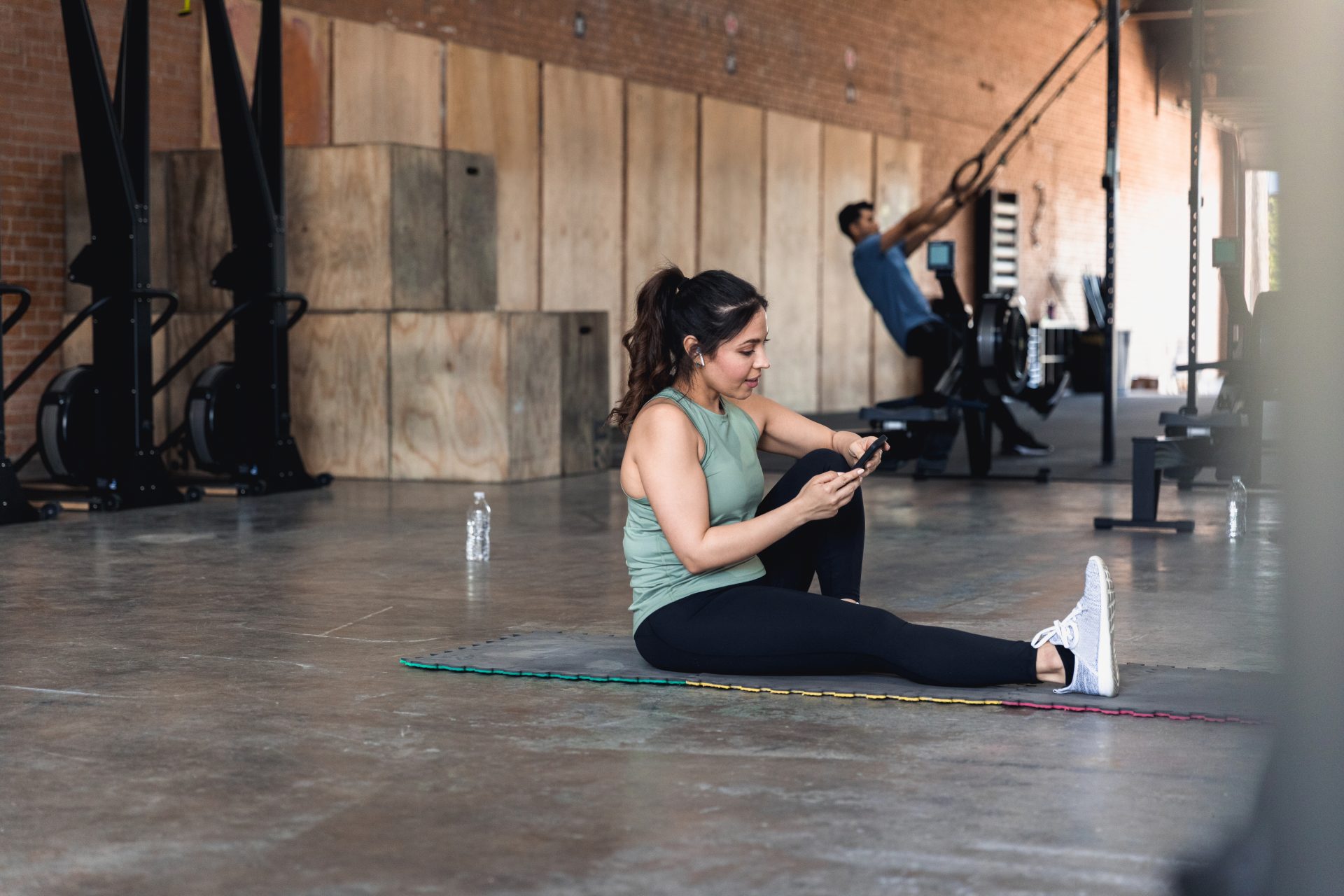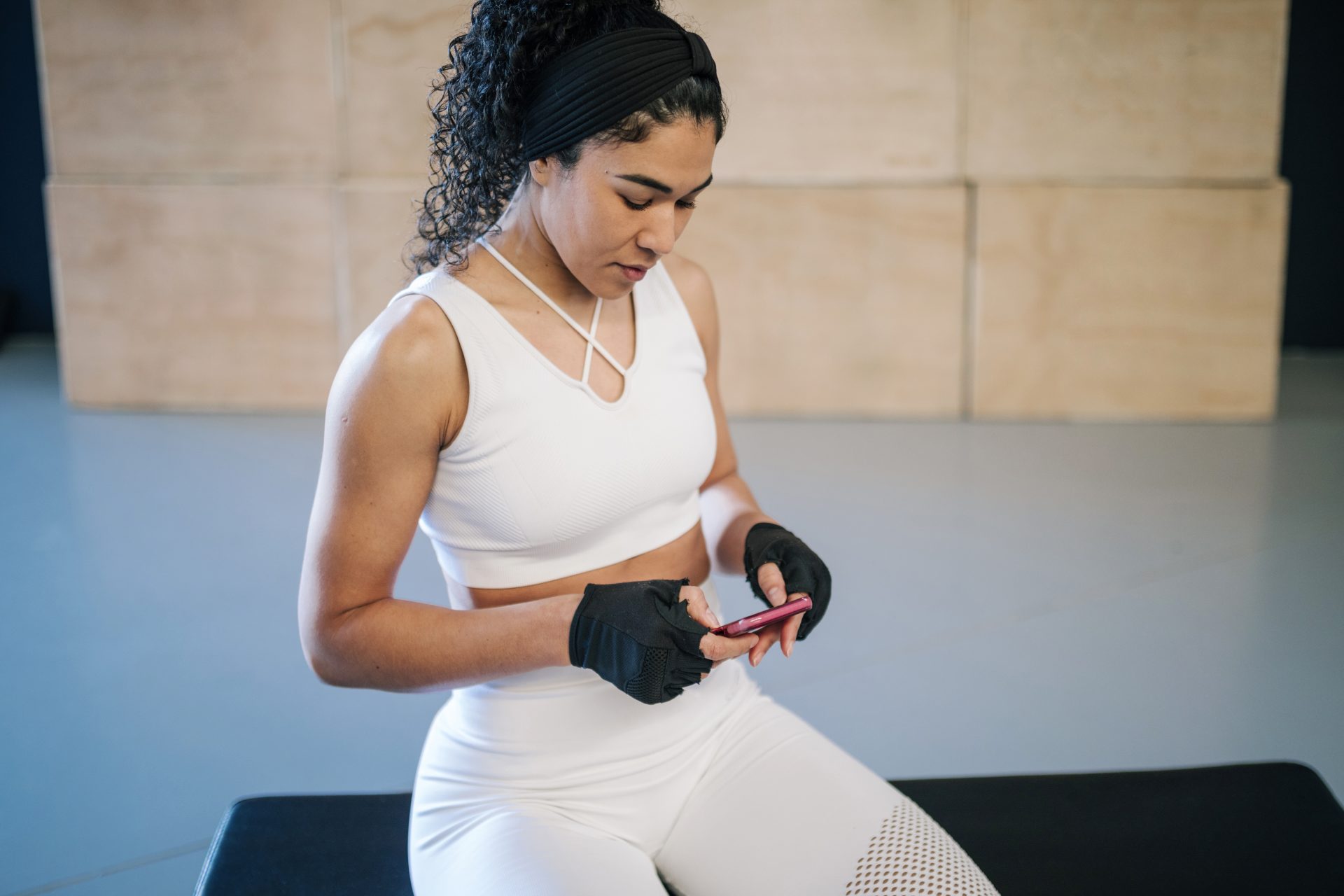Just how bad is it to text between sets? The mental and physical impact might be bigger than you thought…
We reach for our phones 96 times a day to text, read or scroll. That happens when we’re lying in bed, walking down the road, and undoubtedly when we’re at the gym. Be honest: have you found yourself peeling away from your screen only to realise that a 60-second rest break has actually become a three-minute pause in your workout?
But just how bad is it to have technology with you on the gym floor? After all, screens are what got us through our training over the past year and a half. “My very first reaction is: don’t do it,” says Alex Coleman, movement coach, pilates teacher and trainee psychotherapist. “I know people use their devices as a tool, and we should use tech to our advantage. But the temptation to end up on Instagram is always there with a device.”
You may also like
Here’s how virtual group classes can help with loneliness on your fitness journey
Why you should avoid using your phone while exercising
It turns out that using your phone really can impact your workouts. In a 2015 paper from PLOS, researchers found that the average speed of users who were texting or talking on a phone during a treadmill run was significantly lower than when they ran without tech. Average heart rate was also significantly lower when people were texting – suggesting you really aren’t getting the most from your training when also clicking on your phone.
Maybe that goes without saying, and the reality is that many of us probably aren’t holding our phone in our hand as we squat. But we often are sucked into WhatsApp group chats during our rest, or seeing drop-down notifications out of the corner of our eye as we leave our phone within arm’s reach. These things have an impact: in a 2006 study, participants were asked to lift a 15.9 kg weight at a fixed rate for a total of 30 minutes. They had cognitive distractions throughout their training, and researchers found that when they were faced with these there was a reduction in elbow and shoulder flexion and extension – essentially, their movement was impacted, meaning the outcome of your workouts will be significantly reduced.

“When we’re out of our heads and not focusing on the exercise, everything is thrown off. The muscles aren’t activating in the same way, the nervous system isn’t connecting the brain and the muscles in a way that makes the body stronger. When you’re concentrating your mind on the movement, you are strengthening your nervous system, your fascia, your muscles, your stability,” Coleman explains.
The risk of injury
Let’s be honest, not focusing is a sure-fire way to get injured – as Coleman herself has. “A few weeks ago I was stretching out my back and rather than lie back, being with my body, feeling everything release and relaxing my tissue, I sat on my phone. What I didn’t realise was that I over released and my back went into spasm. It’s just so easy to stop paying attention,” says Coleman.
And, in a 2017 study published in Performance Enhancement & Health, researchers found that texting during exercise like walking or running impacts postural stability by 45%, meaning you’re at a greater risk of falls and injuries.
You may also like
5 tips for reducing your risk of injury when you’re new to strength training
The digital distraction
Let’s not take away from the fact that virtual workouts have been a lifesaver for the many unmotivated or uninitiated during lockdown. But “the more you’re on your phone and looking to an outside source, the less you’re in your body. I encourage my clients to learn the principles of the moves and the reasons why they’re doing them so that one day they are confident enough to train themselves,” says Coleman. “If every time you exercise you go on your phone and follow a checklist, it takes away from experiencing and learning it yourself. That’s where strength really comes from: when your mind and body are connecting.”
Essentially, your digital workout plans should be a springboard for you to take ownership of your own training – not something that sucks you into the screen.

The benefits to tech
Don’t throw our tech just yet. Studies show that using your phone to play music is hugely beneficial for your workout: the same 2015 paper found that listening to music resulted in faster treadmill runs and also the greatest enjoyment of runs. While talking on the phone did mean that peoples training was less intense, they also enjoyed their workout more so than when they had no phone at all.
“Liking [exercise] has been positively correlated with duration and frequency of exercise, as well as long-term commitment towards physical activity,” researchers wrote.
So, if you want to follow a plan, why not print it off on paper so that you can keep your phone in your bag and not have to look at notifications as you lunge? Or download the programme or video so you can put your phone on airplane mode. But most importantly, just be conscious. You might see everyone around you texting away during rest periods, but try to use the time to focus on yourself and your training and you’ll probably reap the results.
Images: Pexels / Getty
Source: Read Full Article
